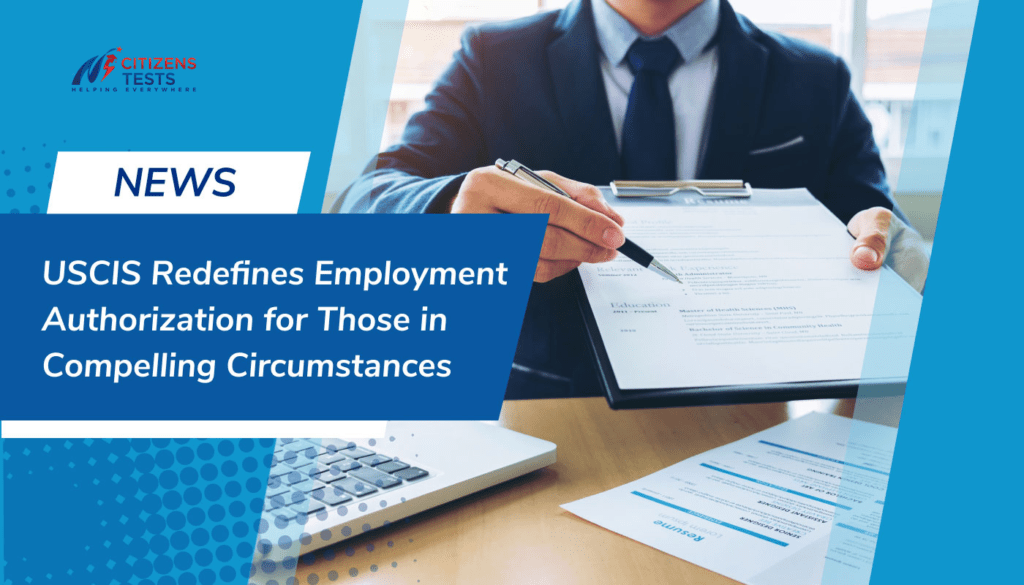
USCIS Provides Guidance on Employment Authorization Documents Based on Compelling Circumstances
U.S. Citizenship and Immigration Services issued policy guidance on Employment Authorization Documents eligibility (8 CFR 204.5(p)) for compelling circumstance-based applications, both initial and renewal.
For an applicant to be eligible for an initial EAD based on compelling circumstances, they must meet the following eligibility requirements:
- The principal applicant is the principal beneficiary of an approved Form I-140, Immigrant Petition for Alien Workers, in either the 1st, 2nd, or 3rd employment-based preference category;
- The principal applicant is in valid E-3, H-1B, H-1B1, O-1, or L-1 nonimmigrant status or authorized grace period when they file the Form I-765, Application for Employment Authorization;
- The principal applicant has not filed an adjustment of status application;
- An immigrant visa is not available to the principal applicant based on the applicant’s priority date according to the relevant Final Action Date in the U.S. Department of State’s Visa Bulletin in effect when they file Form I-765;
- The applicant and their dependents provide biometrics as required;
- The applicant and their dependents have not been convicted of a felony or two or more misdemeanors; and
- USCIS determines, as a matter of discretion, that the principal applicant demonstrates compelling circumstances that justify the issuance of employment authorization.
The guidance covers compelling circumstances for principal applicants and their dependents and provides a non-exhaustive list of situations that could lead to a finding that compelling circumstances exist, including serious illness and disability, employer dispute or retaliation, other substantial harm to the applicant, or significant disruption to the employer.
The guidance also provides details on evidence an applicant could submit to demonstrate one of these compelling circumstances. For example, a principal applicant with an approved immigrant visa petition in an oversubscribed visa category or chargeability area, who has lived in the United States for a significant amount of time, could submit evidence such as school or higher education enrollment records, mortgage records, or long-term lease records to support a potential finding of compelling circumstances. Compelling circumstances could include, if, due to job loss, the family may otherwise be forced to sell their home for a loss, pull their children out of school, and relocate to their home country.
For more information about these compelling circumstances EADs, please see the policy alert. Please also see our resource on Options for Nonimmigrant Workers Following Termination of Employment, for more evidence on options for maintaining a period of authorized stay in the United States. Visit the Policy Manual Feedback page to provide feedback on this update.

